Biloxi, Mississippi 作者: 来源: 发布时间:2021-11-09
I.Population and Area
₋Area
Land: 42.99 sq mi (111.34 km2)
₋Population
Total: 44,054
Density: 1,075.02/sq mi (415.07/km2)
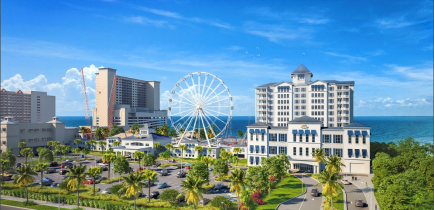
II.Natural Geography
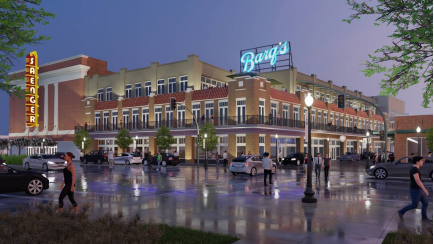
Street View
₋Biloxi is a city and one of two county seats of Harrison County, Mississippi, United States (the other seat being the adjoining city of Gulfport). The 2010 United States Census recorded the population as 44,054, and in 2019 the estimated population was 46,212. The area's first European settlers were French colonists.
₋The city is part of the Gulfport–Biloxi metropolitan area and the Gulfport-Biloxi-Pascagoula, MS Combined Statistical Area. Prior to Hurricane Katrina, Biloxi was the third-largest city in Mississippi, behind Jackson and Gulfport. Due to the widespread destruction and flooding, many refugees left the city. Post-Katrina, the population of Biloxi decreased, and it became the fifth-largest city in the state, being surpassed by Hattiesburg and Southaven.
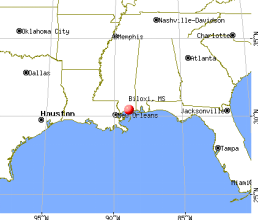
₋The beachfront of Biloxi lies directly on the Mississippi Sound, with barrier islands scattered off the coast and into the Gulf of Mexico. Keesler Air Force Base lies within the city and is home to the 81st Training Wing and the 403d Wing of the U.S. Air Force Reserve.
III.ECONOMY
₋The average salary in Biloxi, MS is $14.91. Trends in wages decreased by -100.0 percent in Q2 2020. The cost of living in Biloxi, MS is 11 percent higher than the national average. The most popular occupations in Biloxi, MS are Registered Nurse (RN), Licensed Practical Nurse (LPN), and Certified Nurse Assistant (CNA) which pay between $9.36 and $28.90 per year. The most popular employers in Biloxi, MS are Beau Rivage, Merit, and Golden Nugget Casino.
₋Website: https://www.payscale.com/research/US/Location=Biloxi-MS/Salary
IV.Industrial Characteristics
₋Gaming and tourism is Biloxi's most important industry. By the end of the twentieth century, there were 12 Las Vegas-style casinos in the region, nine of which were in the city of Biloxi. The casinos feature restaurants, floor shows, and round-the-clock gambling. According to a formula devised when gambling was legalized, 8 percent of gross gaming revenue goes to the state and 3.2 percent of gross gaming revenue is distributed among city institutions, including the general fund, the city public safety department, the city school system, the county school system, and the county public safety department. The revenue of Biloxi's casinos exceeded $879 million in 2003, representing the city's greatest single source of revenue. This economic impact is only expected to increase with the opening of the Hard Rock Hotel & Casino Biloxi in the summer of 2005. The lure of gaming has also bolstered the region's tourism industry in general, as many gamblers also visit other area attractions outside of the casinos. In fact, most visitors are no longer merely overnight guests; now the average tourist stays 2.5 days. The seafood industry contributes $450 million dollars to the Mississippi Gulf Coast economy, supporting an estimated 1,600 shrimp workers and 1,200 employees in seafood processing. Shrimp accounts for about half of the seafood market, contributing $250 million to the economy, followed by oysters, menhaden, and crabs. Thirty-eight seafood processing plants are situated along the Gulf Coast, with 11 in Biloxi. Building boats and producing boat paraphernalia are also big businesses in the area. Ingalls Shipbuilding, based 20 miles east of Biloxi in Pascagoula, employs approximately 10,000 workers, more than any other private employer in Mississippi.
₋Website: http://www.city-data.com/us-cities/The-South/Biloxi-Economy.html
V.Attractions
1.Gulf Islands National Seashore
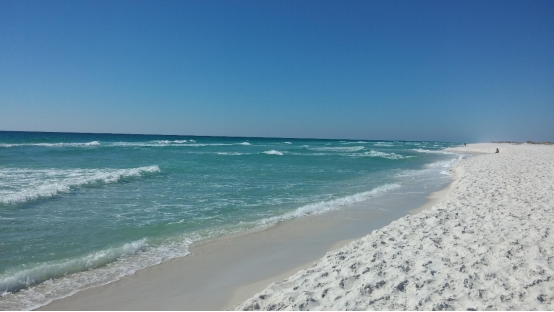
₋Gulf Islands National Seashore offers recreation opportunities and preserves natural and historic resources along the Gulf of Mexico barrier islands of Florida and Mississippi. The protected regions include mainland areas and parts of seven islands. Some islands along the Alabama coast were originally considered for inclusion, but none is part of the National Seashore.
₋The Florida District of the seashore features offshore barrier islands with sparkling white quartz sand beaches (along miles of undeveloped land), historic fortifications, and nature trails. Mainland features near Pensacola, Florida, include the Naval Live Oaks Reservation, beaches, and military forts. All Florida areas are accessible by automobile.
₋The Mississippi District of the seashore features natural beaches, historic sites, wildlife sanctuaries, islands accessible only by boat, bayous, nature trails, picnic areas, and campgrounds. The Davis Bayou Area is the only portion of the National Seashore in Mississippi that is accessible by automobile. Petit Bois, Horn, East Ship, West Ship, and Cat islands are accessible only by boat. The 4,080 acres (16.5 km2) Gulf Islands Wilderness offers special protection, within the seashore, to parts of Petit Bois Island and Horn Island, Mississippi.
₋Considerable damage to public infrastructure occurred as a result of storms during the 2004 and 2005 Atlantic hurricane seasons. In subsequent years, infrastructure was fully repaired. All roadways, parking areas, campgrounds, and visitor centers have been repaired and are fully operational. A few trails and associated boardwalks and dune crossovers were still under repair as of late 2010, especially near the Fort Pickens campground.
₋Address: 3500 Park Rd, Ocean Springs, MS 39564, United States
₋Phone: +1 228-230-4100
₋Visitors: 5,600,240 (in 2019)
₋Website: https://www.nps.gov/guis/index.htm
2.Biloxi Lighthouse
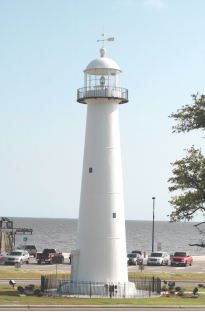
₋Biloxi Lighthouse is a lighthouse in Biloxi, Mississippi, adjacent to the Mississippi Sound of the Gulf of Mexico. The lighthouse has been kept by female keepers for more years than any other lighthouse in the United States . It was listed on the National Register of Historic Places in 1973 and declared a Mississippi Landmark in 1987.
₋On March 3, 1847, the United States Congress authorized $12,000 for the construction of a lighthouse at Biloxi. The United States Department of the Treasury let a contract, dated October 15, 1847, to the Baltimore foundry of Murray and Hazlehurst to build an iron lighthouse for $6,347.00. The keeper's house was contracted separately. The Collector at Mobile, Alabama, purchased the site. The tower was completed and placed in operation in 1848. The tower was 45 feet (14 m) from the base to the lantern room and displayed nine lamps. The first keeper was Marcellus J. Howard.
₋Mary Reynolds, with a "large family of orphan children" was appointed keeper on April 11, 1854. She remained in service until the U.S. Civil War. She owed her appointment to Governor Albert Gallatin Brown. In 1856 the light was "refitted."
₋In 1860 a hurricane swept the coast and destroyed some lighthouses, but not the Biloxi Lighthouse. Keeper Reynolds reported that she kept the light burning through the storm and "faithfully performed the duties of Light Keeper in storm and sunshine attending it. I ascended the Tower at and after the last destructive storm when man stood appalled at the danger I encountered." During a storm in 1860, a portion of the sand under the lighthouse eroded away, causing the structure to lean. Later more sand was removed from the opposite side to correct this. Local authorities ordered that the light be extinguished on June 18, 1861. The light was repaired and returned to service by November 15, 1866. At that time the tower was reported to have been painted with coal tar to protect it from rust, not, as has been reported, to mourn the assassination of President Abraham Lincoln.
₋Perry Younghans was appointed keeper on November 14, 1866 but fell ill soon thereafter. His wife, Maria Younghans, took over and tended the light. Mr. Younghans died and Mrs. Younghans was appointed keeper on December 6, 1867. In 1868 the tower was painted white and almost fell during a hurricane that year. In 1880 the old keeper's house was razed and rebuilt. The seawall was washed away and the tower threatened during a hurricane on October 1, 1893. The New Orleans Daily Picayune of October 21, 1893 noted that "At Biloxi Mrs. Younghans, the plucky woman who was in charge of the light, kept a light going all through the storm notwithstanding the fact that there were several feet of water in the room where she lived."
₋In 1898 a telephone cable was laid by Reese Hutchinson between the Biloxi and the Ship Island lighthouses at the start of the Spanish–American War.
₋In 1916 the light was again damaged by a hurricane, and the wharf and boathouse were destroyed by a storm the following year. Maria Younghans retired on December 31, 1918 and was replaced by her daughter, Miranda, who remained as keeper until 1929. The Younghans family had maintained the light for a total of 63 years. W. B. Thompson then took over as keeper.
₋In 1927 the station was electrified.
₋In April 1960, the beach near the light was the site of a "wade-in" to protest the segregation of Mississippi's beaches. In 2010 a civil rights historical marker was placed at the light to commemorate the demonstration.
₋In 1969 the keeper's house was destroyed by Hurricane Camille.
₋The tower is now owned by the City of Biloxi and is operated as a private aid to navigation.
₋In 2005, the lighthouse was damaged by Hurricane Katrina. Restoration was completed with a re-lighting ceremony on February 19, 2010
₋Address: 1050 Beach Blvd, Biloxi, MS 39530, United States
₋Height: 19 m
₋Opened: 1848
₋Phone: +1 228-374-3105
₋Website: https://biloxi.ms.us/visitor-info/museums/lighthouse/
3.Harrah's Gulf Coast
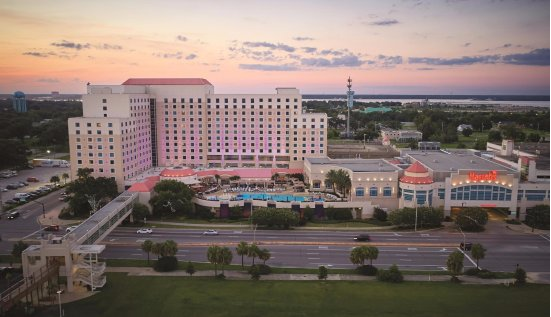
₋Harrah's Gulf Coast is a casino and hotel in Biloxi, Mississippi, owned by Vici Properties and operated by Caesars Entertainment.
₋This facility replaces the former Grand Casino Biloxi, which was destroyed by Hurricane Katrina. At the time, the casino offered a 106,000-square-foot (9,800 m2) casino, two hotels with 975 rooms, and a 42,000-square-foot (3,900 m2) convention center.
₋Currently, the casino features around 800 slot machines and 35 table games.
₋Prior to 2005 this casino was a Grand Casinos and Caesars Entertainment property. After the ownership change to Harrah's Entertainment it was announced that this casino was being converted to the Horseshoe brand. But these plans were put on hold when Biloxi and the Gulf Coast were hit by Hurricane Katrina. The storm destroyed the barge on which the casino floor was located; the storm surge swept the barge from the shoreline all the way across Beach Boulevard, nearly 500 feet (150 m) inward. On May 21, 2006, demolition crews imploded the beach-side hotel structure, leaving Harrah's with a clean slate for rebuilding.
₋After Katrina, the company announced that they will be re-opening the facility during Summer 2006, with a 35,000 sq ft (3,300 m2) casino, a spa, and other amenities, but the facilities south of Highway 90 would take several years to complete. On August 17, 2006, the first phase of the rebuilding opened with a 495-room hotel and a new land-based casino.
₋The long-term plan for this property had been to construct what Harrah's (now renamed back to Caesars) called "a destination resort." Part of the expansion plans revolved around Caesars' purchase of the 18 acres (73,000 m2) that comprised the neighboring Casino Magic property. In May 2007, Harrah's announced the Margaritaville Casino and Resort would be built on the site.
₋However, construction of that expansion ceased in 2008 due to economic concerns, and in January 2011, Caesars officials announced the termination of the agreement with Jimmy Buffett and his Margaritaville brand. A new Margaritaville Casino and Restaurant, not affiliated with Caesars Entertainment, was to be constructed at a different location in Biloxi.
₋In October 2017, ownership of the property was transferred to Vici Properties as part of a corporate spin-off, and it was leased back to Caesars Entertainment.
₋Address: 280 Beach Blvd, Biloxi, MS 39530, United States
₋Phone: +1 800-946-2946
₋Website: https://www.caesars.com/harrahs-gulf-coast
VI.History
₋Colonial era
₋In 1699 French colonists formed the first permanent European settlement in French Louisiana, at Fort Maurepas, now in Ocean Springs, Mississippi, and referred to as "Old Biloxi". They were under the direction of Pierre Le Moyne d'Iberville. La Louisiane was separated from Spanish Florida at the Perdido River near Pensacola (this was founded by the Spanish 1559 and again in 1698).
₋The name of Biloxi in French was Bilocci, a transliteration of the term for the local Native American tribe in their language. Labeled along with "Fort Maurepas" on maps dated circa year 1710/1725, the name was sometimes used in English as "Fort Bilocci".
₋In 1720, the administrative capital of French Louisiana was moved to Biloxi (or Bilocci) from Mobile (or La Mobile). French Louisiana, part of New France, was known in French as La Louisiane in colonial times. In modern times it is called La Louisiane française to distinguish it from the modern state of Louisiana.
₋Due to fears of tides and hurricanes, colonial governor Bienville moved the capital of French Louisiana in 1722 from Biloxi to a new inland harbor town named La Nouvelle-Orléans (New Orleans), built for this purpose in 1718–1720.
₋In 1763, following Britain's victory in the Seven Years' War/French and Indian War, France had to cede their colonies east of the Mississippi River, except for New Orleans, to Great Britain, as part of the Treaty of Paris. At the same time, the French colony west of the Mississippi, plus New Orleans, was ceded to Spain as part of the Treaty of Fontainebleau.
₋Subsequent history
₋British rule persisted from 1763 to 1779, followed by Spanish rule from 1779 to 1810. Despite this, the character of Biloxi remained mostly French, as their descendants made up the majority of the population. In 1811, the US traded with Spain to take over Biloxi and related area, making it part of their Mississippi Territory. Mississippi, and Biloxi with it, was admitted as a state to the union in 1817.
₋Biloxi began to grow. In the antebellum period of the 19th century, it became known as a summer resort, because of its proximity to the breezes and beaches of the coast. It also had the advantages of proximity to New Orleans and ease of access via water. Summer homes were built by well-to-do farmers and commercial figures. Hotels and rental cottages were developed to serve those who could not afford their own homes.
₋One of Biloxi's best-known features has been the Biloxi Lighthouse. It was built in Baltimore, Maryland, and shipped south, where it was completed at the site in May 1848. (It is one of two surviving lighthouses on the Mississippi Gulf Coast, which at one time had twelve.)
₋In the early stages of the Civil War, Ship Island was captured by Union forces. This enabled them to take control of Biloxi as well. No major battles were fought in the area, and Biloxi did not suffer direct damage from the war. Some local Union sentiment could be discerned following the war's conclusion.
₋In the postbellum period, Biloxi again emerged as a vacation spot. Its popularity as a destination increased with railroad access. In 1881, the first cannery was built in the town to process seafood, leading to others soon joining the location. This stimulated development in the city, and it attracted new immigrants from Europe and different ethnic groups who worked in the seafood factories. They processed shrimp and other local seafood. These changes gave Biloxi a more heterogeneous population.
₋During World War II, the United States Army Air Forces built Keesler Field, now Keesler Air Force Base, which became a major basic training site and site for aircraft maintenance. The Biloxi economy boomed as a result, attracting new residents and businesses. By 1958, the first Jewish synagogue had been built in the town.
₋Biloxi's casino history dates to a period in the 1940s. At the time, open, if technically illegal, gambling took place in a casino within the Broadwater Beach Resort. Open gambling ended during the 1950s. The Mississippi Gulf Coast became known as the "Poor Man's Riviera", and was frequented by Southern families interested in fishing expeditions during the summer. Commercially, Biloxi was dominated by shrimp boats and oyster luggers.
₋In 1959 Biloxi was the site of "Mississippi's first public assault on racial barriers in its 15-year civil rights struggle". Gilbert R. Mason, a black physician in Biloxi, went swimming at a local beach with seven black friends. They were ordered to leave by a city policeman, who told them that "Negroes don't come to the sand beach." Mason reacted by leading a series of protests, known as the Biloxi Wade-Ins. The protests were followed in 1960 by the worst racial riot in Mississippi history, during which ten people died. Ultimately, the protests led to the desegregation of the beaches of Biloxi.
₋In the early 1960s, the Gulf Coast again emerged as a prime alternative to Florida as a southern vacation destination among Northerners, with Biloxi a favored destination. Biloxi hotels upgraded their amenities and hired chefs from France and Switzerland in an effort to provide some of the best seafood cuisine in the country. Edgewater Mall was built in 1963.
₋With the introduction of legal gambling in Mississippi in the 1990s, Biloxi was again transformed. It became an important center in the resort casino industry. The new hotels and gambling complexes brought millions of dollars in tourism revenue to the city. The more famous casino complexes were the Beau Rivage casino resort, the Hard Rock Hotel and Casino, Casino Magic, Grand Casino, Isle of Capri Casino Resort Biloxi, Boomtown Casino, President Casino Broadwater Resort, and Imperial Palace. Like Tunica County in the northern part of the state, Biloxi and the surrounding Gulf Coast region was considered a leading gambling center in the Southern United States.
₋To celebrate the area's tricentennial in 1998/99, the city's tourism promotion agency invited the nationally syndicated Travel World Radio Show to broadcast live from Biloxi, with co-host Willem Bagchus in attendance.
₋By the early 21st century, Biloxi's economy was based on the seafood industry, tourism, and gaming.
₋Hurricanes
₋Scores of hurricanes have hit the Mississippi Gulf Coast, but the most destructive, as measured by storm surge levels in the Biloxi Lighthouse, occurred in 1855, 1906, 1909, 1947, 1969 (Hurricane Camille), and 2005 (Hurricane Katrina)
₋Hurricane Katrina
₋On August 29, 2005, Hurricane Katrina hit the Mississippi Gulf Coast with high winds, heavy rains and a 30-foot (9.1 m) storm surge, causing massive damage to the area. Katrina came ashore during the high tide of 6:56AM, +2.3 feet more. Commenting on the power of the storm and the damage, Mayor A. J. Holloway said, "This is our tsunami." Mississippi Governor Haley Barbour was quoted as saying the destruction of the Mississippi coastline by Hurricane Katrina looked like an American Hiroshima.
₋On the morning of August 31, 2005, in an interview on MSNBC, Governor Barbour stated that 90% of the buildings along the coast in Biloxi and neighboring Gulfport had been destroyed by the hurricane. Several of the "floating" casinos were torn off their supports and thrown inland, contributing to the damage.
₋Many churches were destroyed or severely damaged, including St. Michael's Catholic Church, which was gutted by the storm surge, breaking the entry doors and stained-glass windows along the first floor; however, the interior was later removed, and the structure was still solid enough to allow repairing the church.
₋Hurricane Katrina damaged over 40 Mississippi libraries beyond repair, breaking windows and flooding several feet in the Biloxi Public Library, requiring a total rebuild.
₋Hurricane-force winds persisted for 17 hours and tore the branches off many coastal oak trees, but the tree trunks survived the 30-foot (9.1 m) flood and many have since regrown smaller branches. Some reconstructed homes still have their antebellum appearance, and miles inland, with less flooding, shopping centers have reopened.
₋Harrison County Coroner Gary T. Hargrove told the mayor and City Council that Hurricane Katrina had claimed 53 victims in Biloxi, as of January 30, 2006. Of the 53 confirmed fatalities in Biloxi, a figure that includes one unidentified male, Hargrove said the average age was 58, with the youngest being 22 and the oldest 90; 14 were female and 39 were male.
₋Biloxi is the site of a well-known memorial to Katrina victims. The memorial was created by a team of local artists (Elizabeth Veglia and Aaron Kramer), an architect (Dennis Cowart), a contractor (Roy Anderson Corporation), and city liaison (Nathan Sullivan), with assistance from the crew and volunteers of Extreme Makeover: Home Edition.
₋Many casinos were damaged or destroyed by Hurricane Katrina. Of the casinos that were located in Biloxi, eight have reopened since Katrina. They are the Grand Biloxi Casino Hotel Spa (formerly known as Grand Casino Biloxi), the Hard Rock Hotel & Casino, the Golden Nugget, the Palace Casino Resort, the IP Casino Resort Spa (formerly known as Imperial Palace), Treasure Bay Casino, Boomtown Casino, and the Beau Rivage, which reopened on the first anniversary of Hurricane Katrina.
₋Multiple plans have been laid out to rebuild the waterfront areas of Biloxi, and the federal government has recently announced that it is considering giving up to 17,000 Mississippi coast homeowners the option to sell their properties so that a vast hurricane-protection zone can be implemented. Meanwhile, the city of Biloxi is rapidly implementing plans to allow the redevelopment of commercial properties south of Highway 90.
VII.Other Information
₋Newspaper
₋Biloxi has one daily newspaper, the Sun Herald, which is headquartered in nearby Gulfport.
₋Television
₋According to Nielsen Media Research, the Biloxi market, as of the 2015–2016 season, is the third largest of five television markets in Mississippi, and the 158th largest in the country. Three major television stations serve the Biloxi area. ABC affiliate WLOX 13 and PBS/MPB member station WMAH-TV 19 are located in Biloxi, while Fox/MyNetworkTV affiliate WXXV-TV 25 is located in Gulfport. In addition to the stations' main programming, WLOX and WXXV-TV broadcast programming from other networks on digital subchannels. WLOX-DT2 serves as the market's CBS affiliate, while WXXV-TV operates the market's respective NBC and CW affiliates on DT2 and DT3.
₋Radio
₋20 FM and 7 AM radio stations operate in and/or serve the Biloxi area.
₋Transportation
₋Biloxi is served by the Gulfport-Biloxi International Airport in Gulfport.
₋Biloxi's main highway is U.S. Highway 90 (Beach Boulevard), which runs along the beach and by the casinos. It connects the city to Gulfport and points westward and to Ocean Springs and Pascagoula to the east. The Biloxi Bay Bridge, connecting Biloxi and Ocean Springs, was rebuilt after Hurricane Katrina, and was fully reopened in April 2008.
₋Interstate 10 passes through the northern sections of the city, leading west 85 miles (137 km) to New Orleans and east 60 miles (97 km) to Mobile, Alabama. Interstate 110 splits off from I-10 at D'Iberville and heads south across the Back Bay of Biloxi to U.S. 90 near Beau Rivage, providing the city with an important hurricane evacuation route.
VIII.Contact Information
Government
Mayor: Andrew Gilich (R)
City Hall
Address: 140 Lameuse St, Biloxi, MS 39530, United States\
Phone: +1 228-435-6257
Website: https://biloxi.ms.us/departments/contact/
